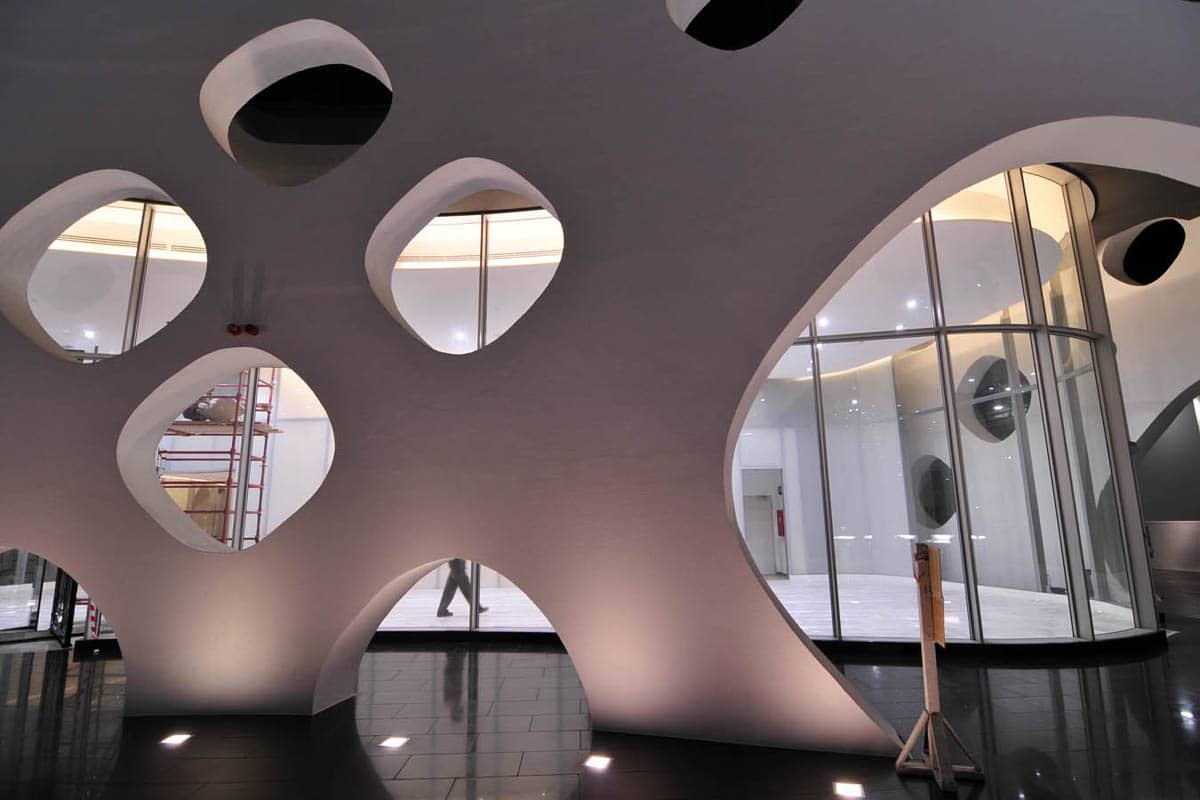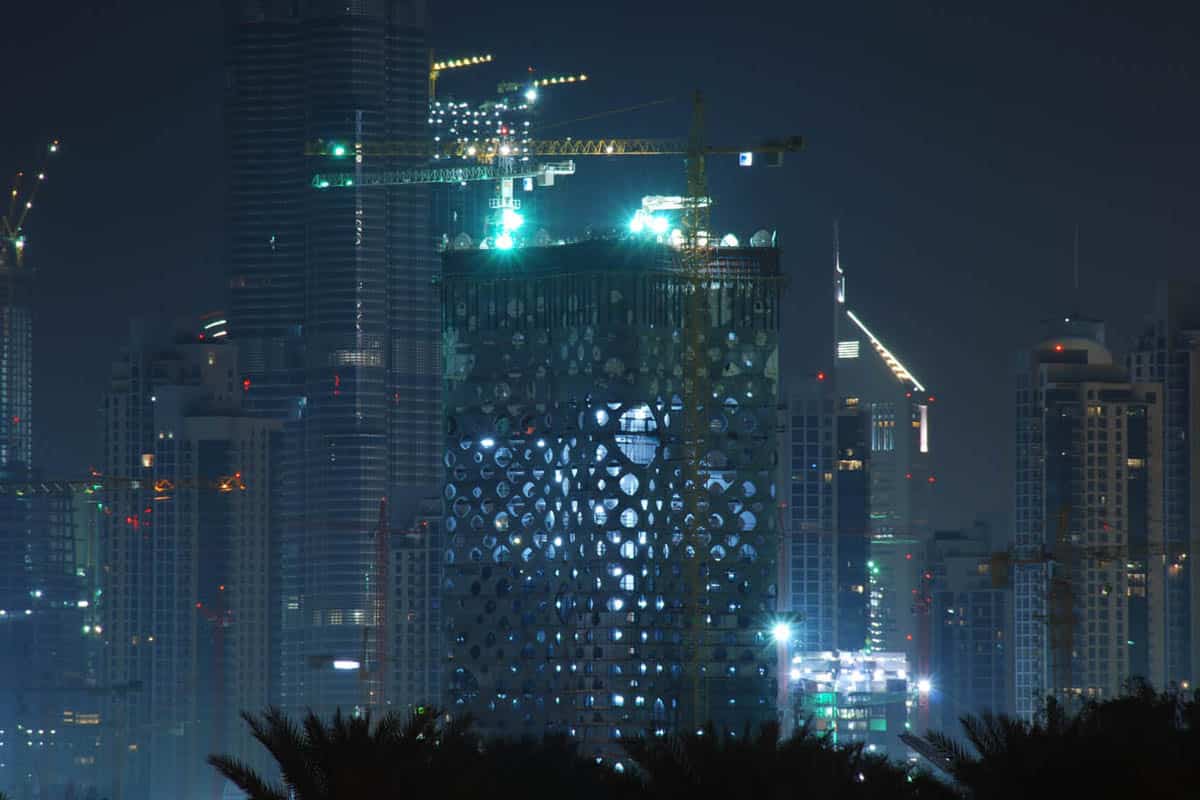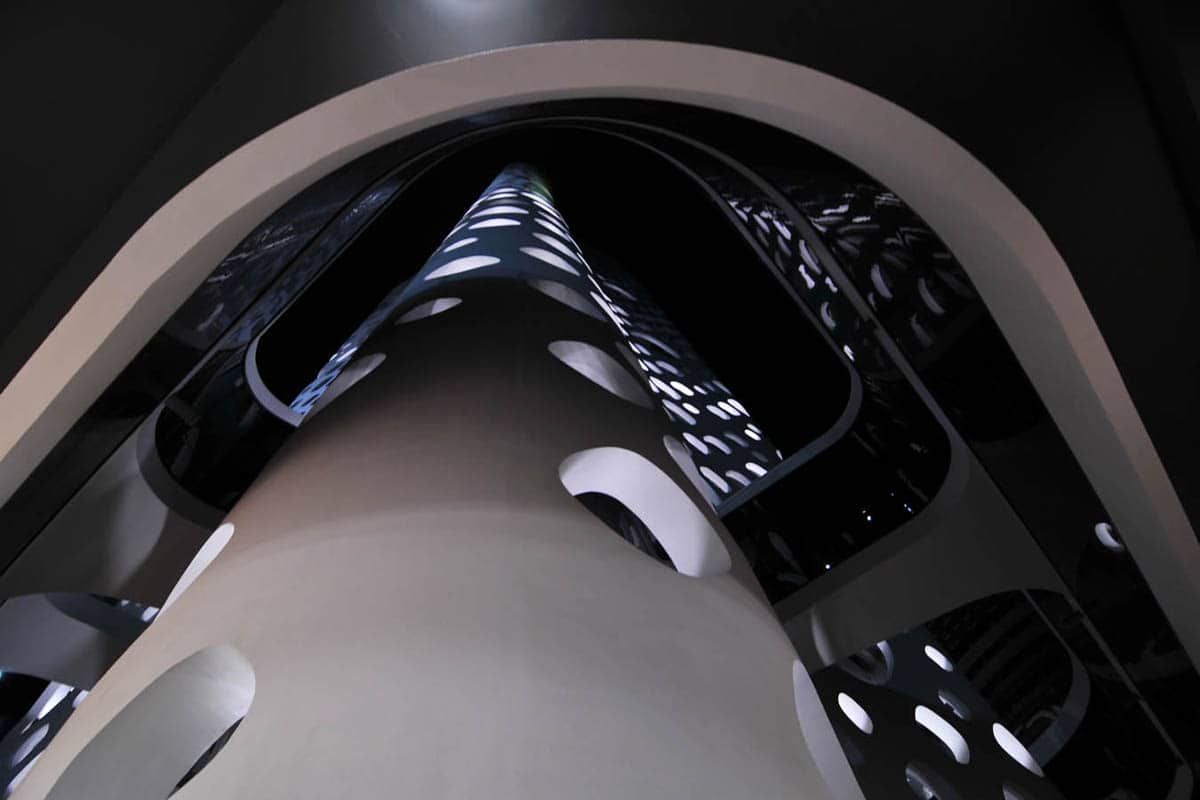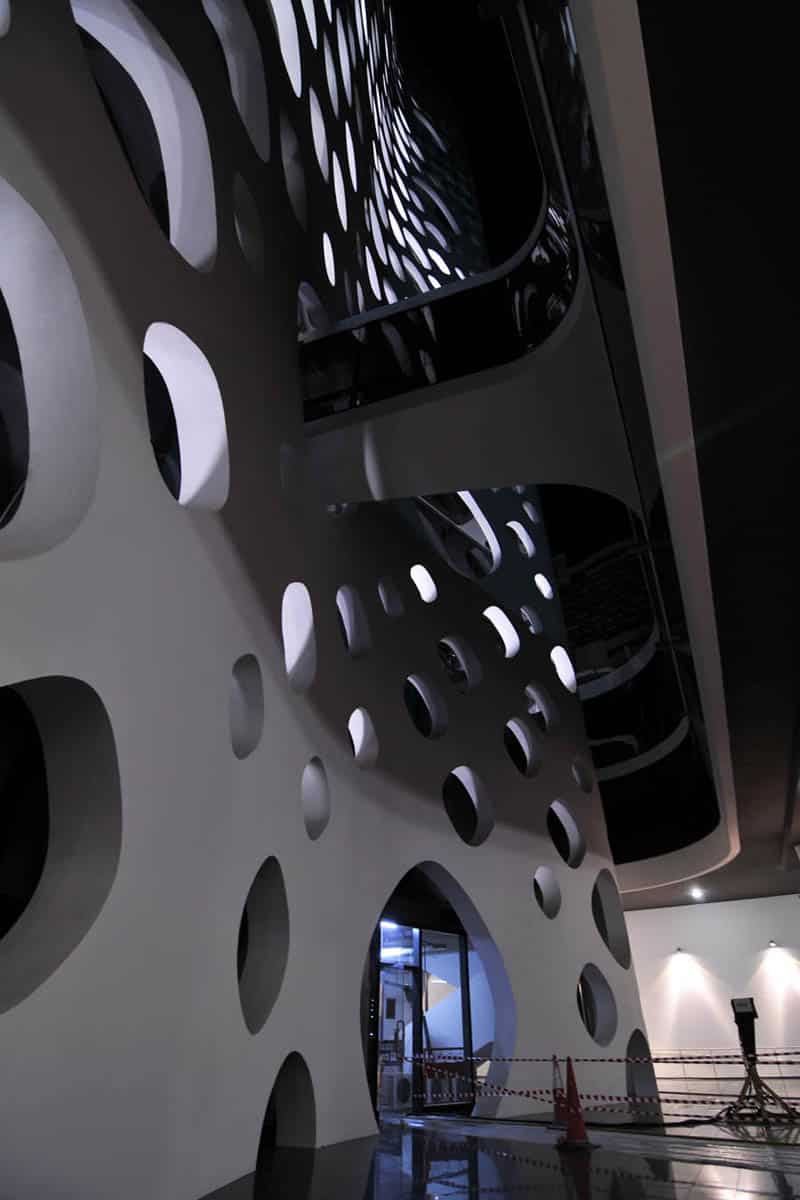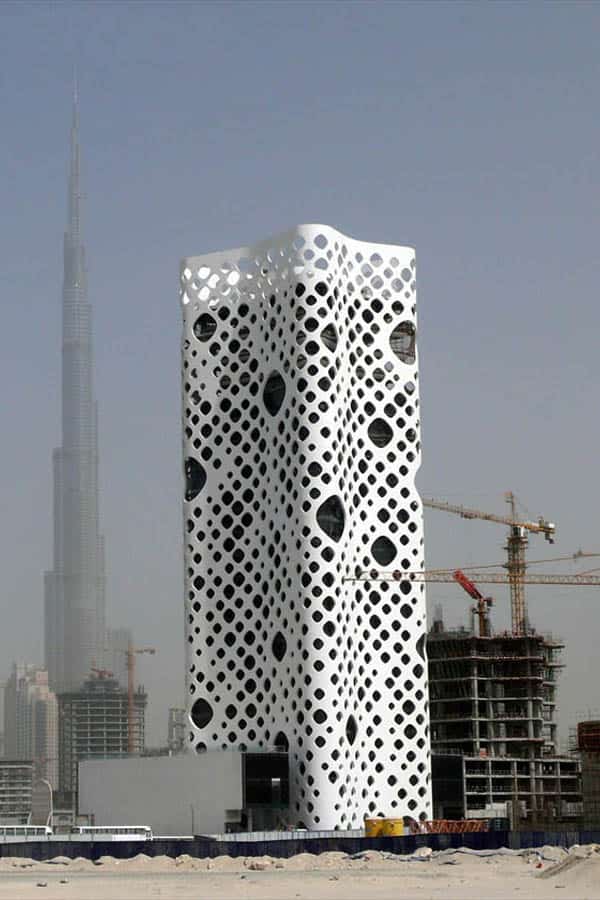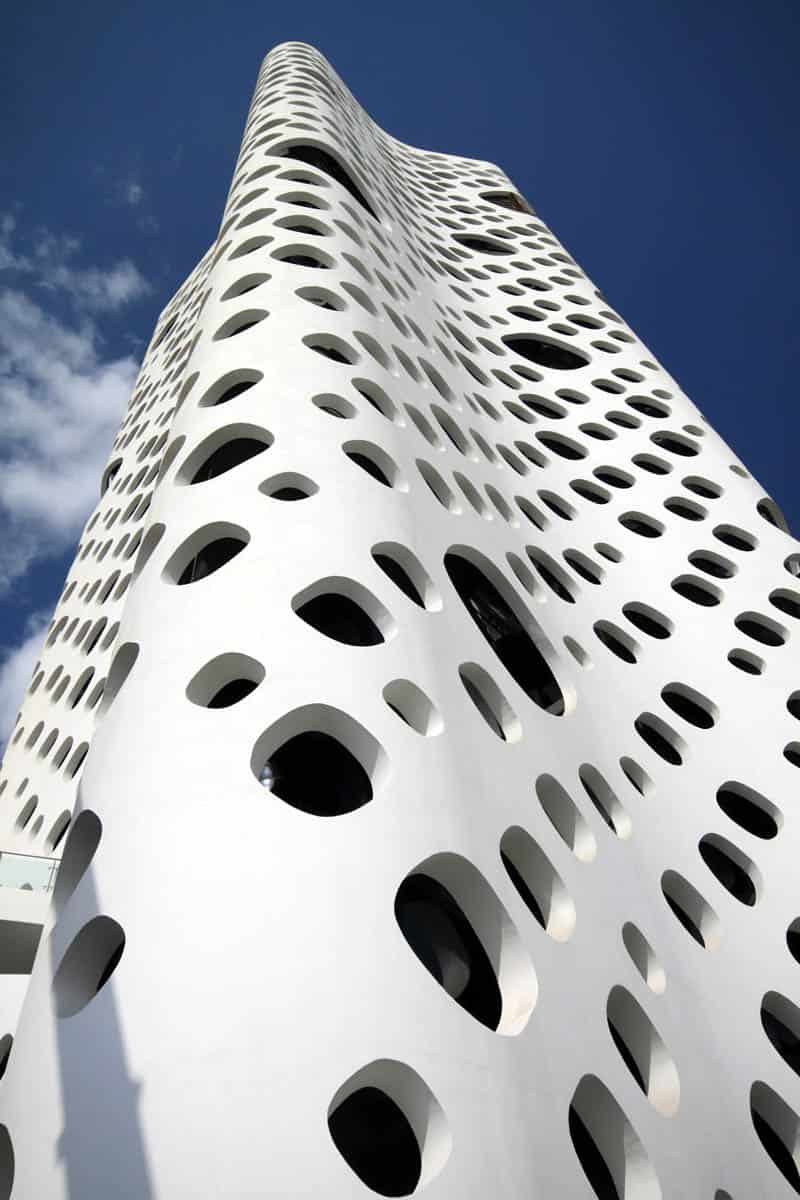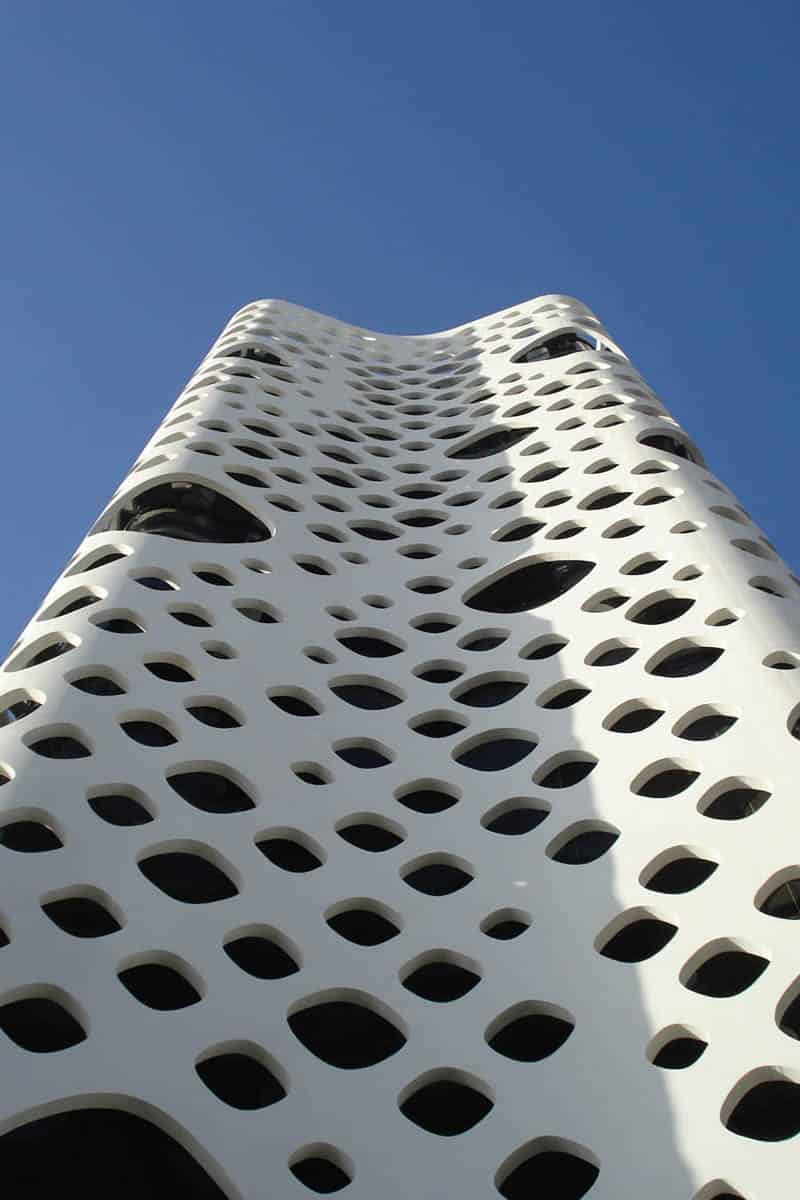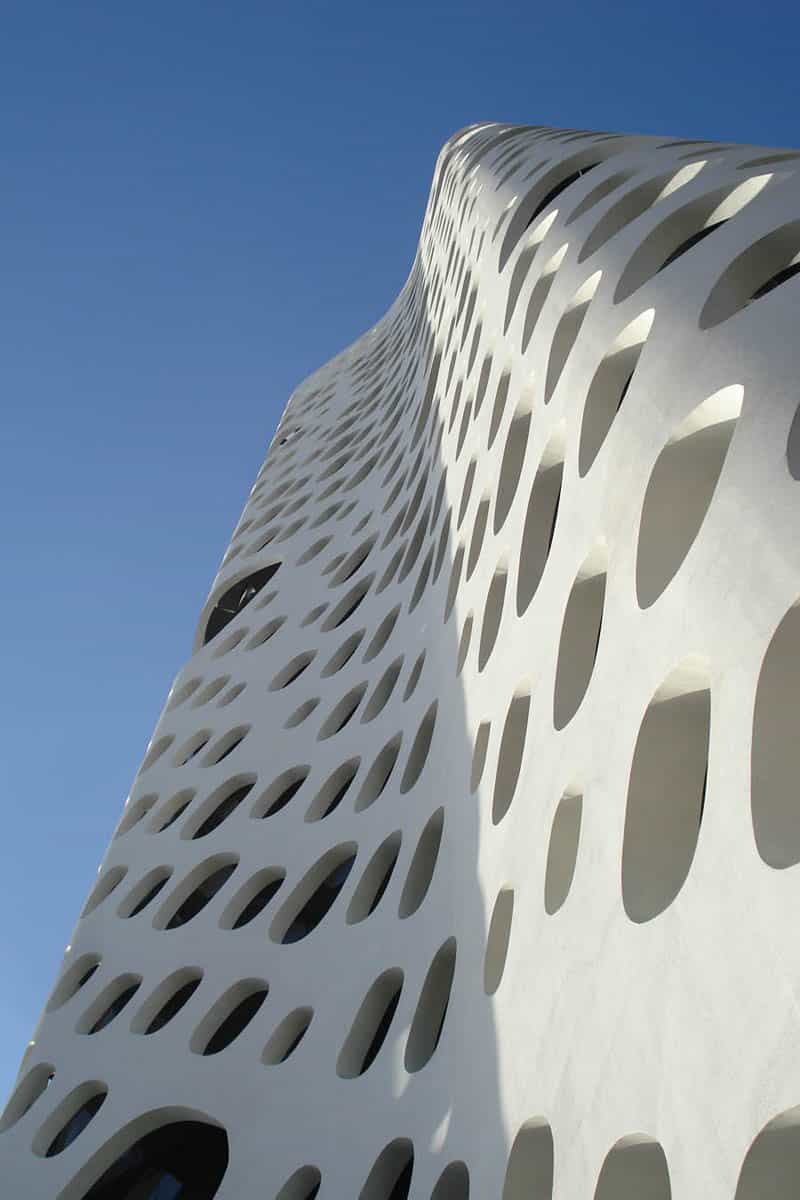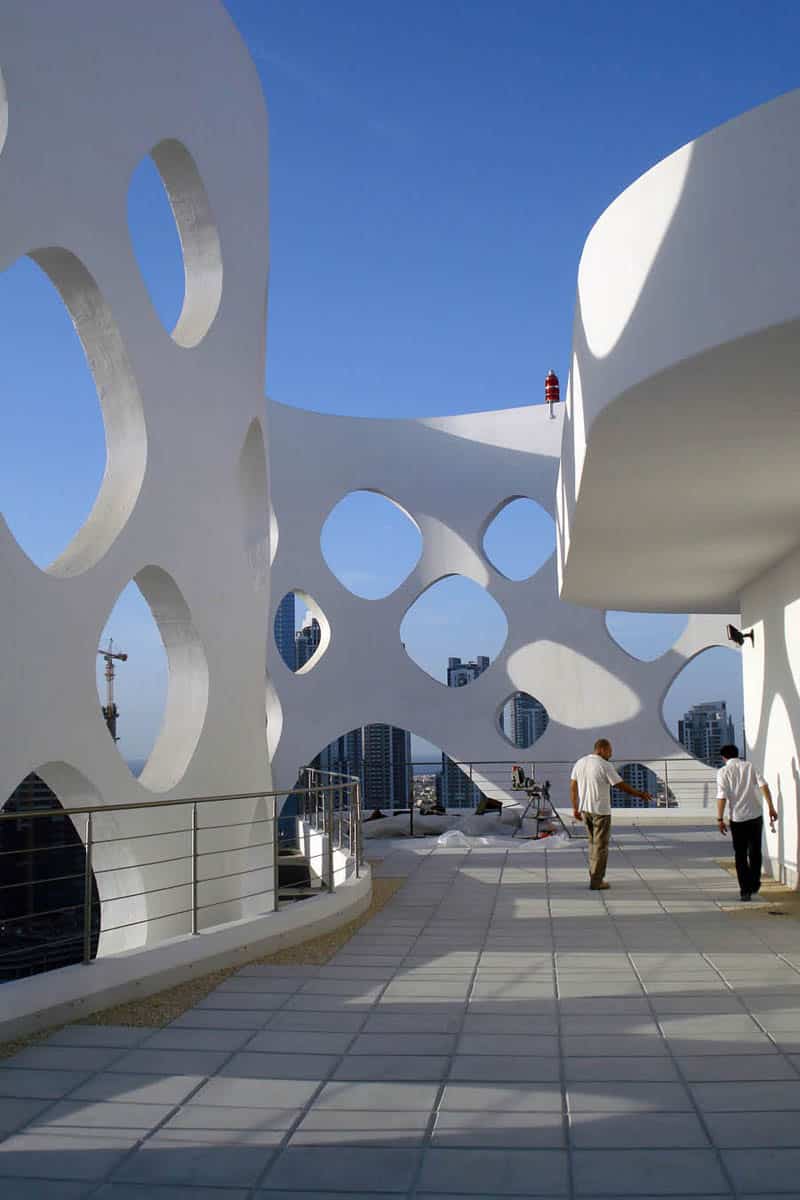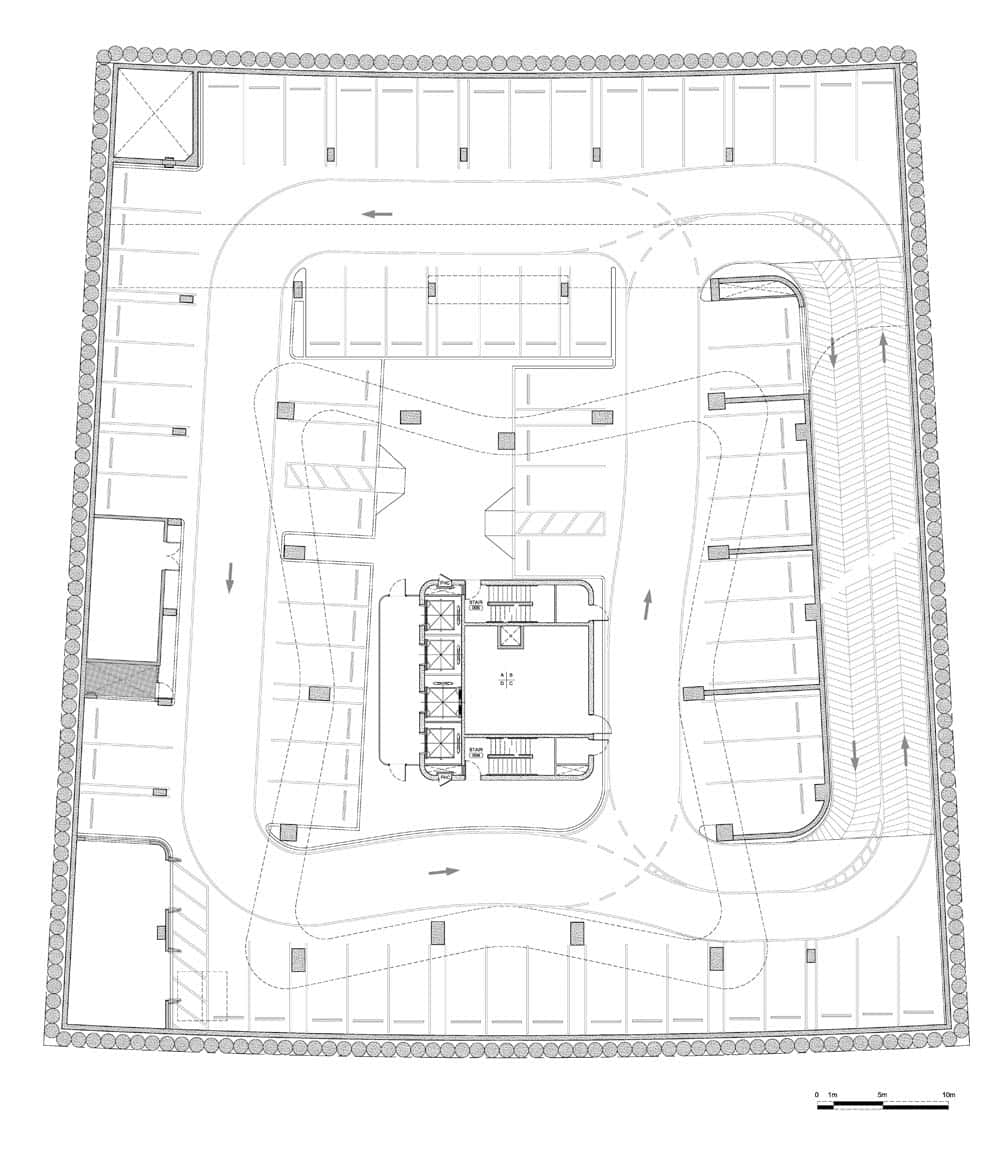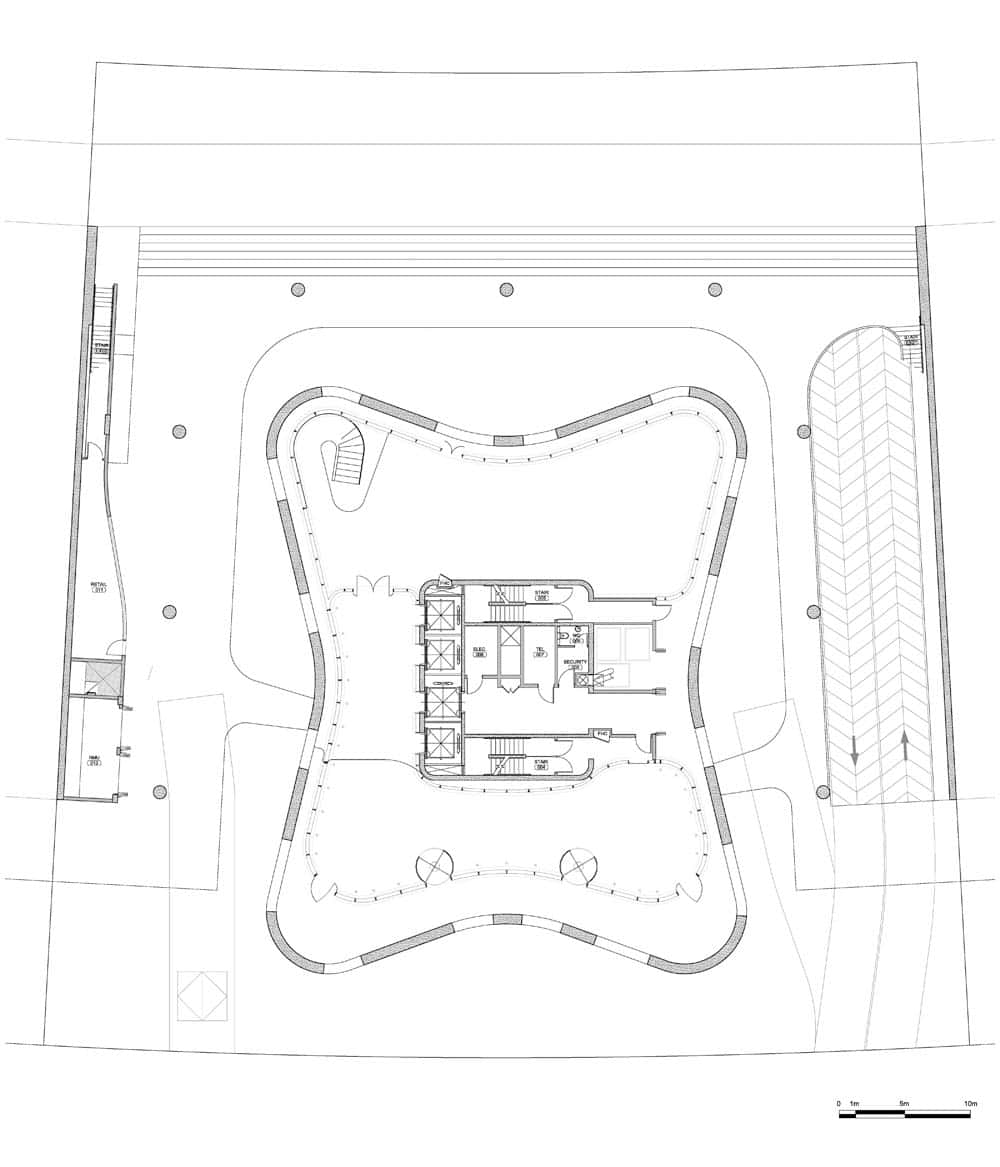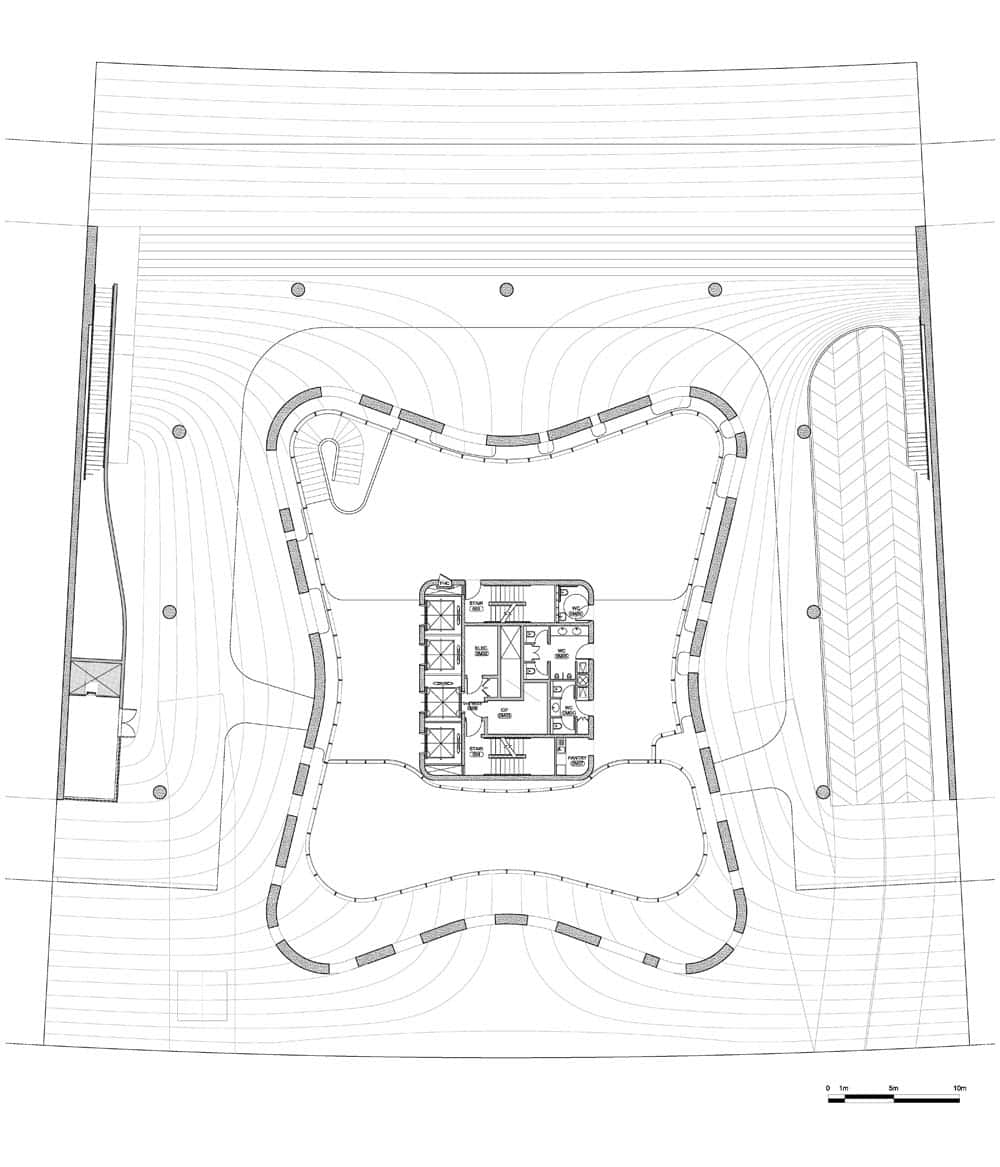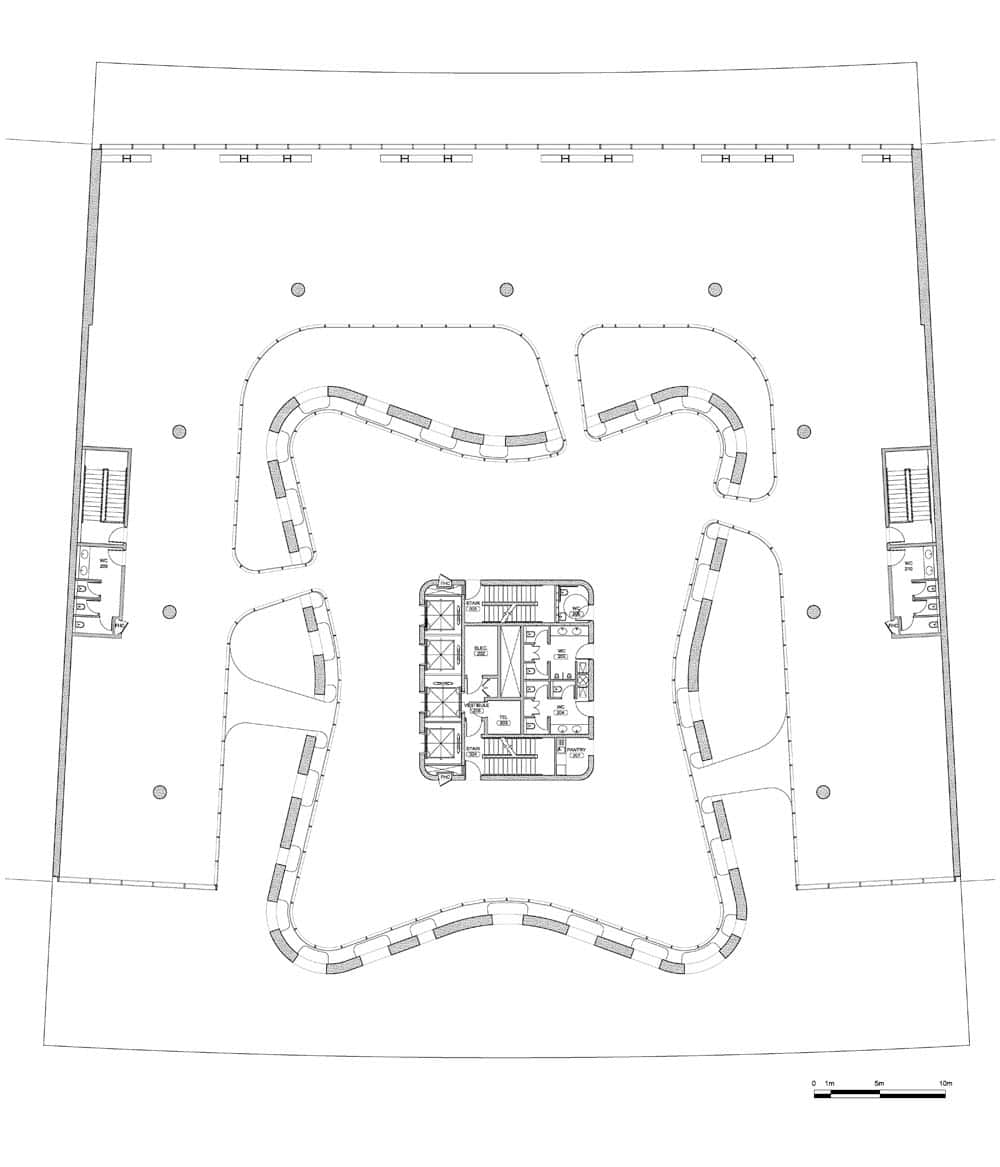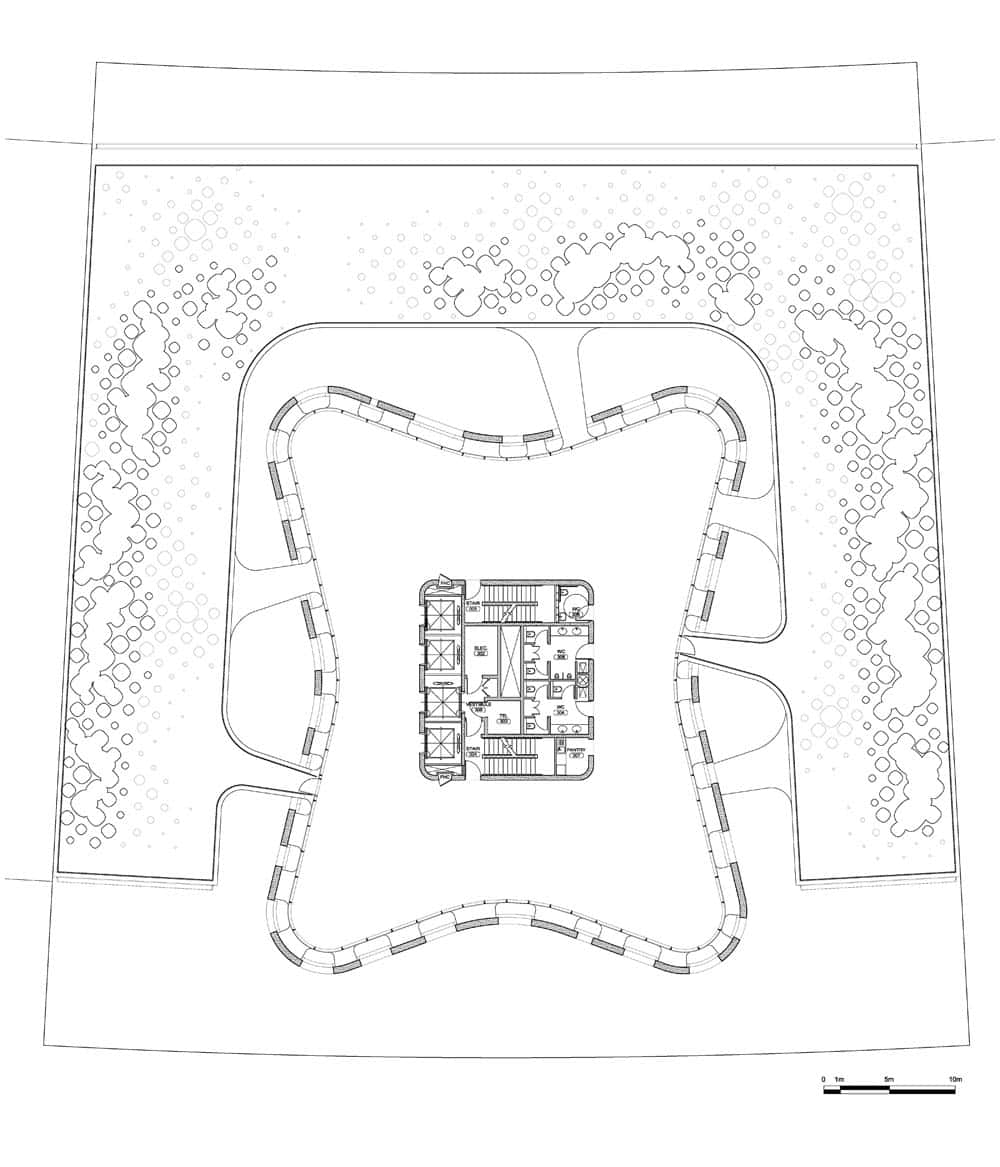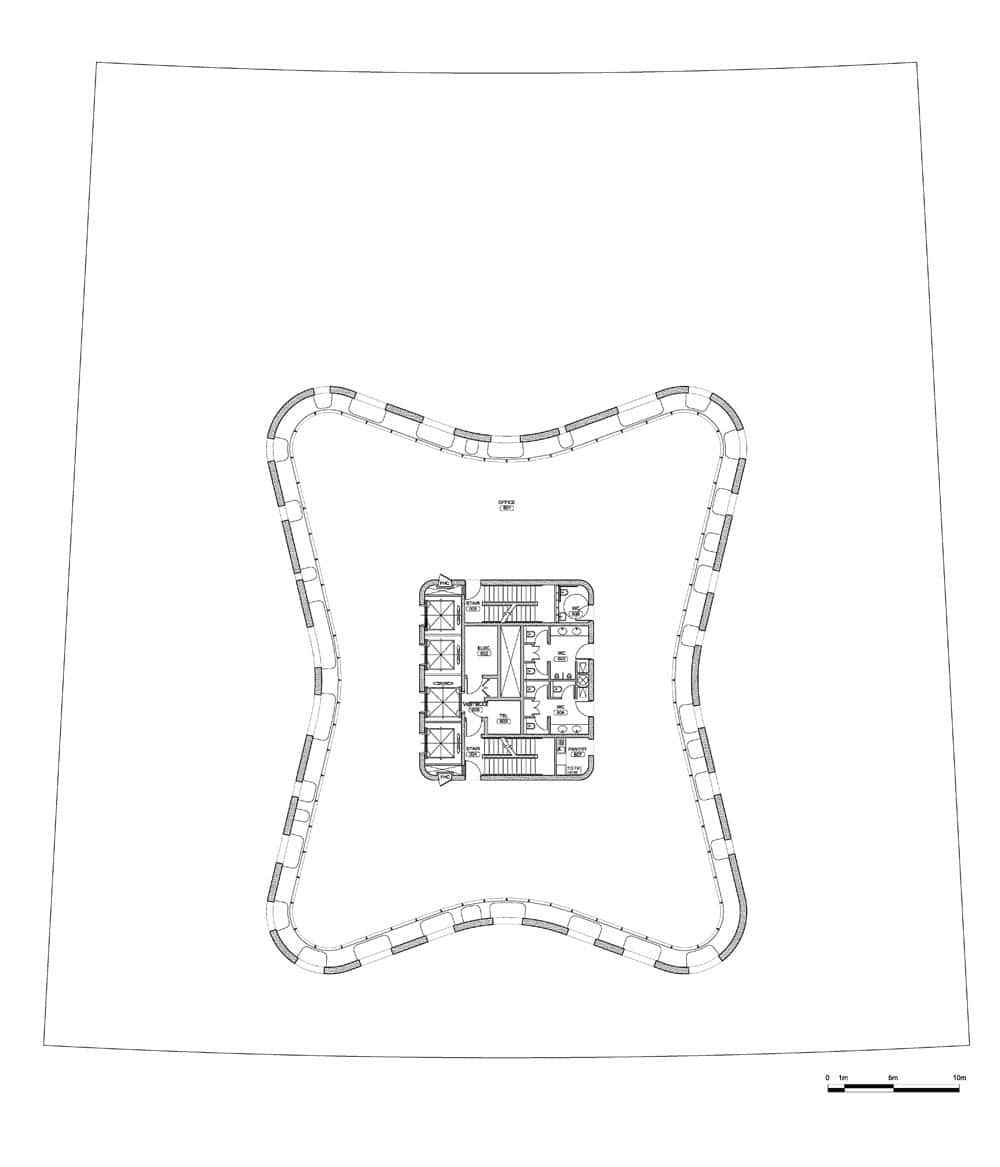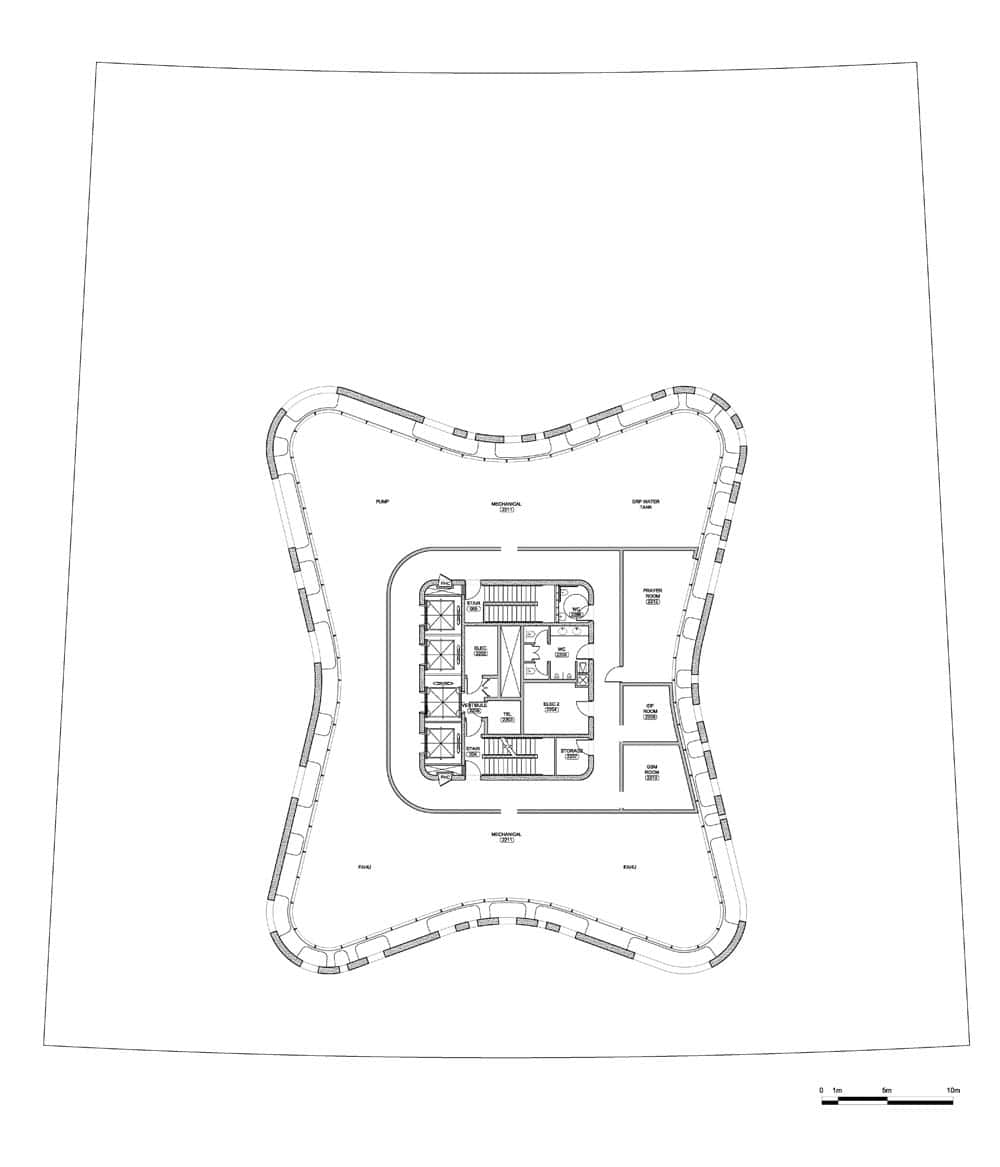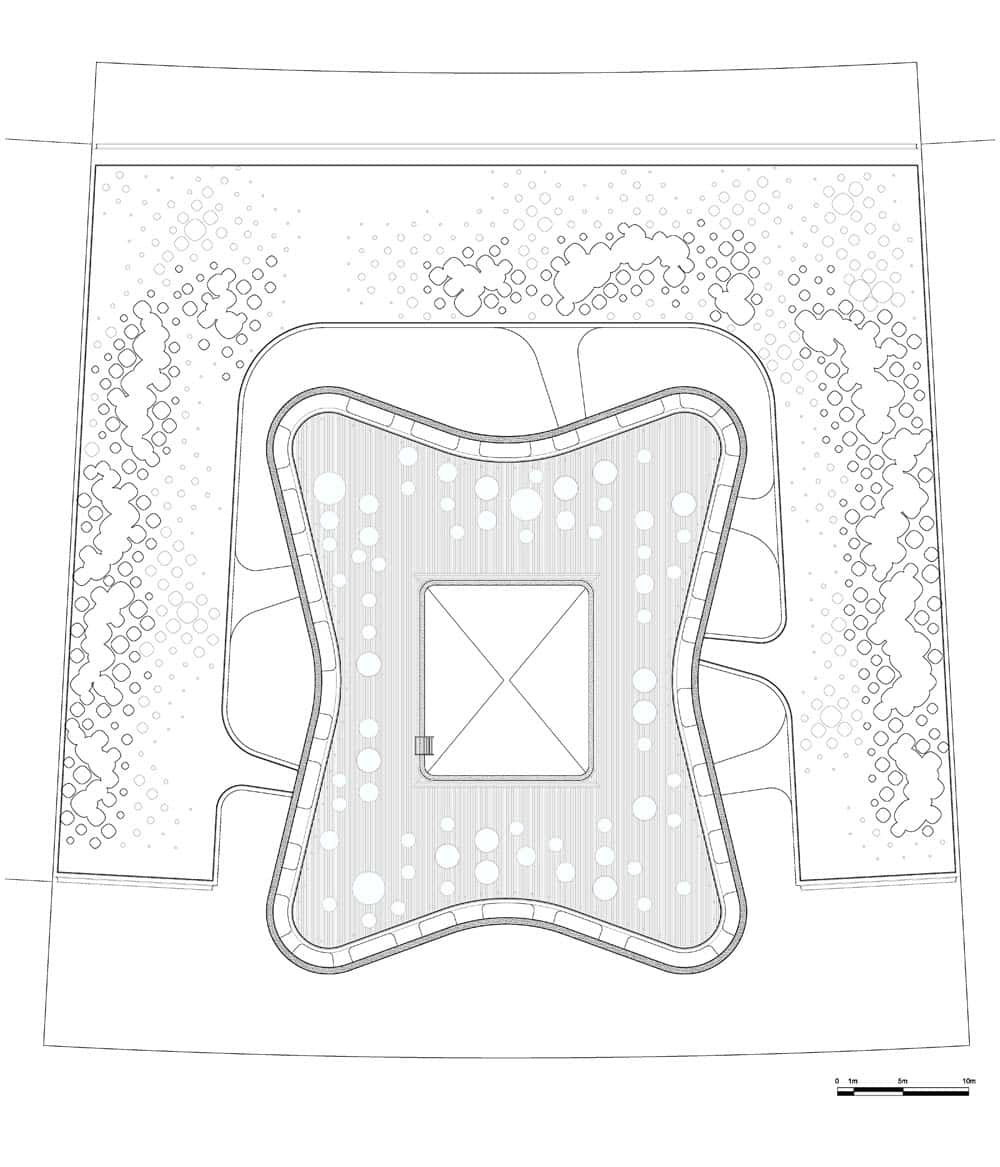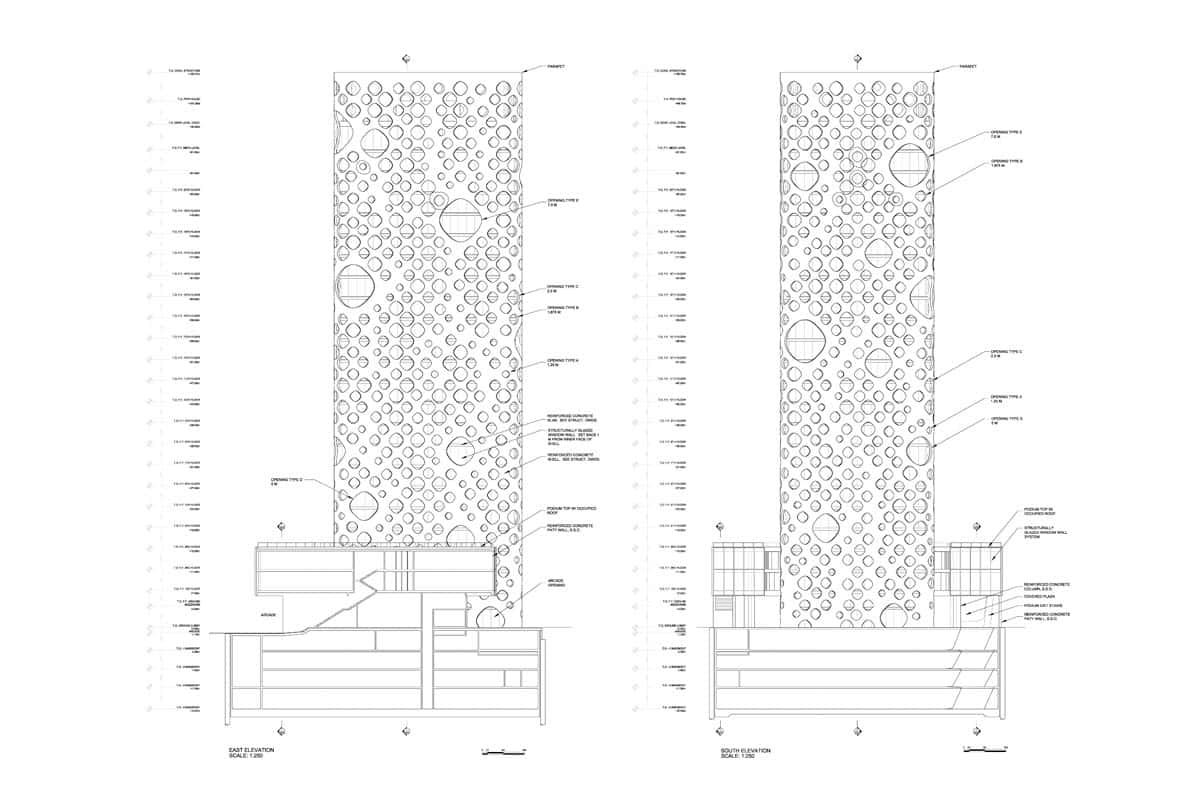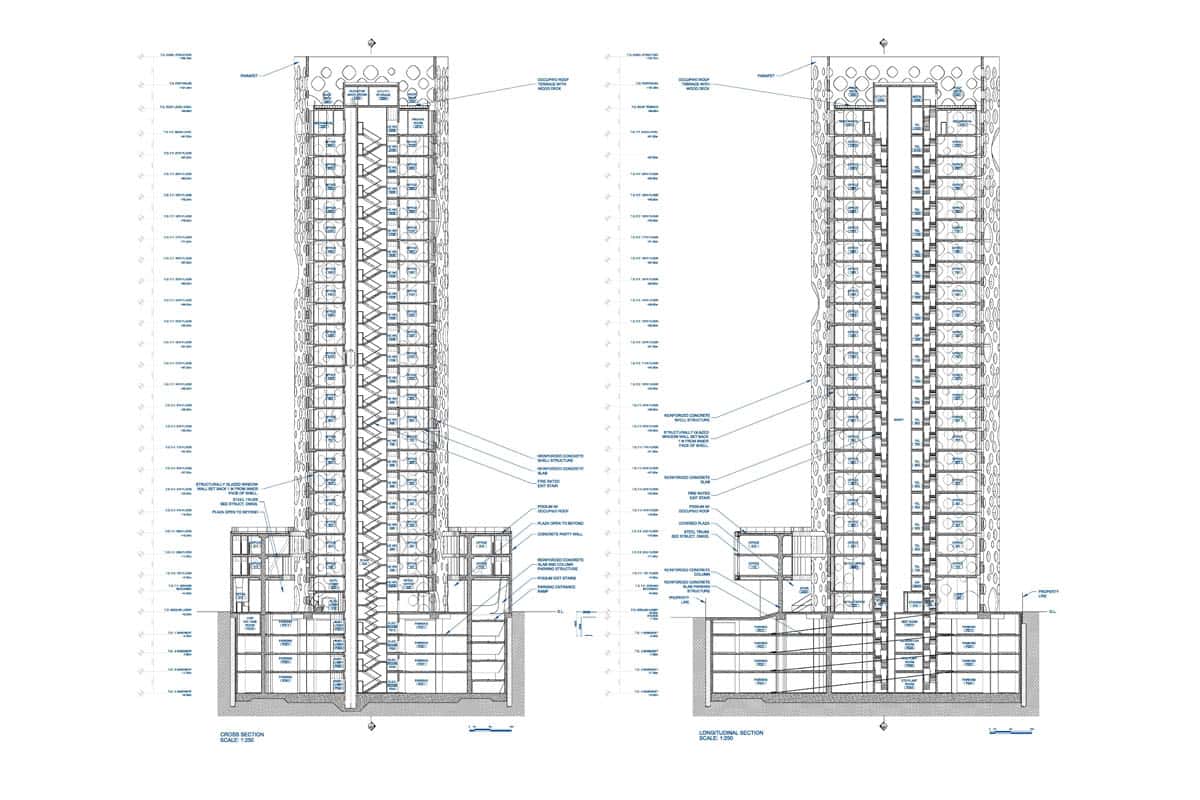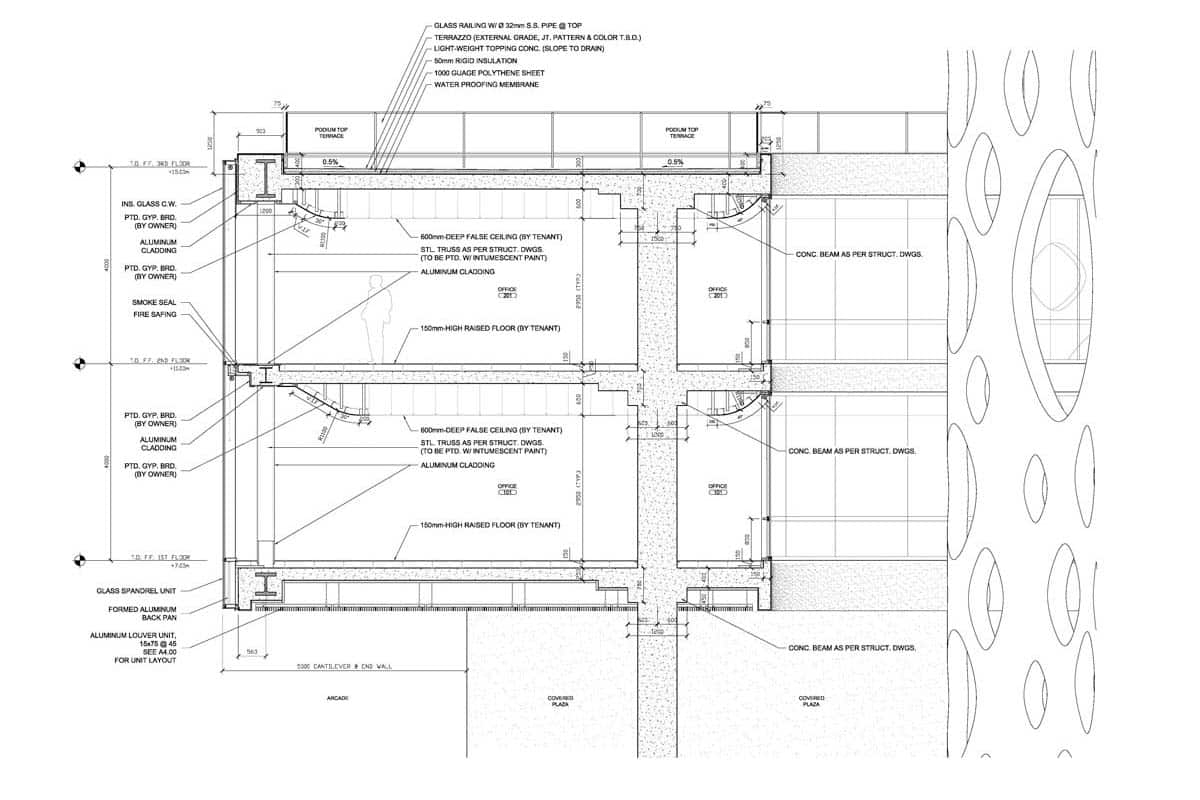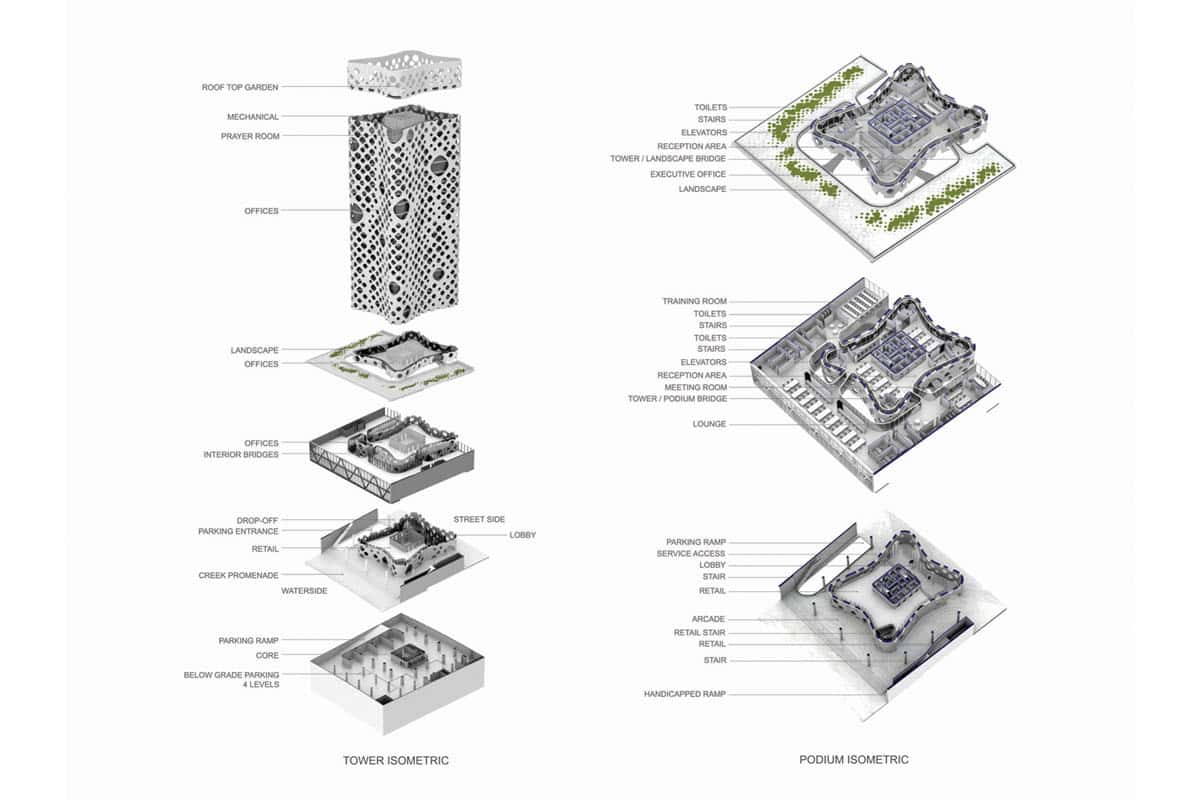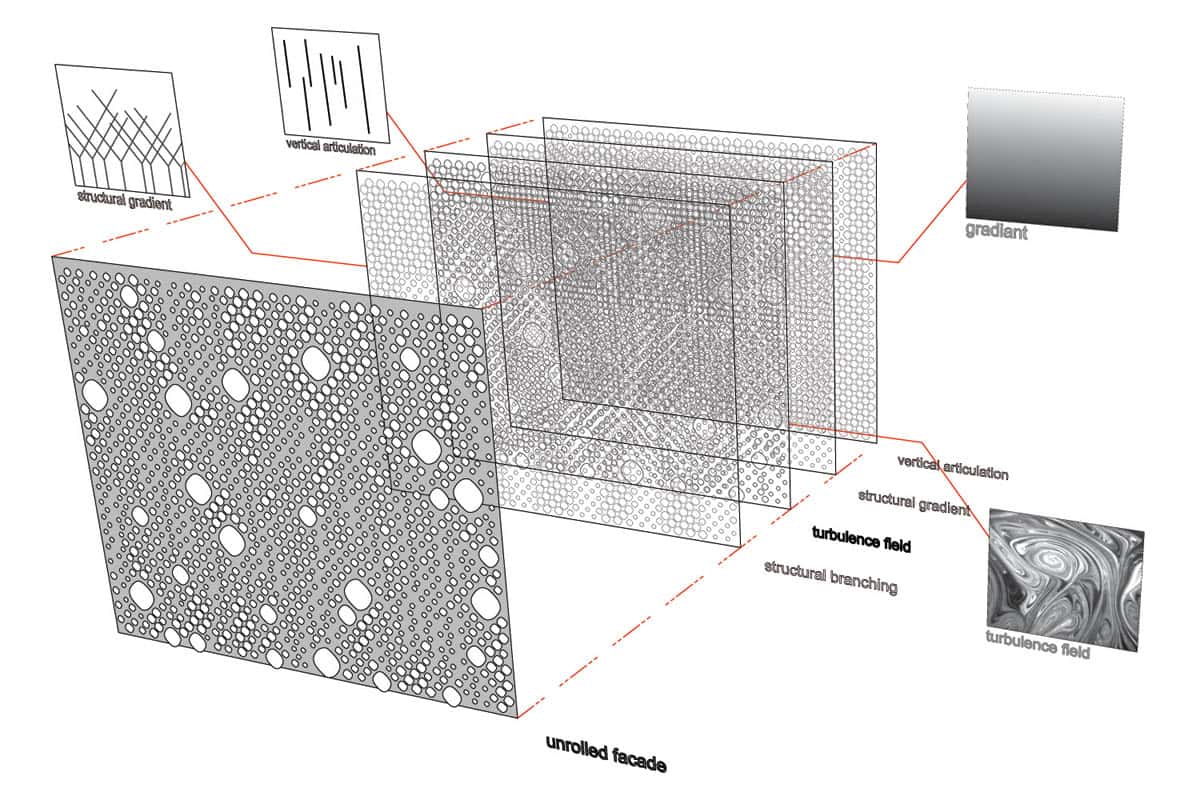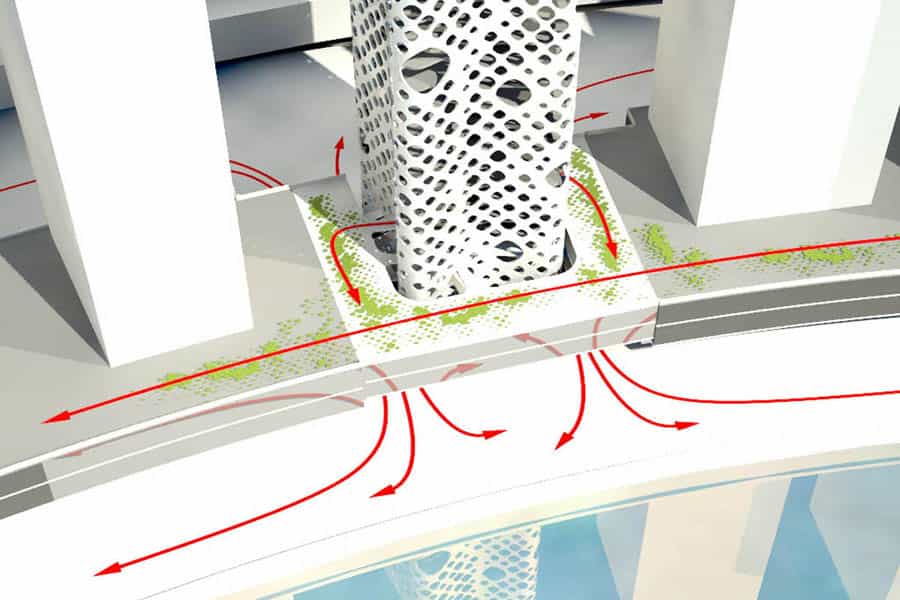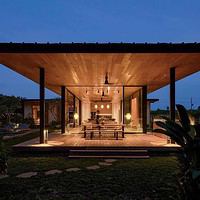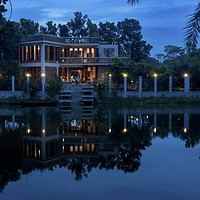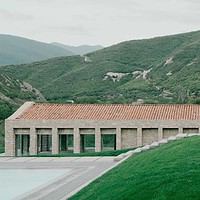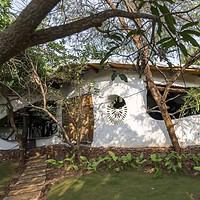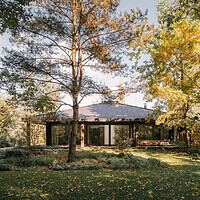A unique tower that defies conventional high-rise design strategies. A second skin wraps the building, adding an enigmatic depth to the facade, as if the tower were a porous white monolith landed in the landscape.
Reiser + Umemoto’s concrete perforated shell, apart from being an oversized beautiful embroidery, has revolutionised the office tower typology. Structure and skin have exchanged places providing column free spaces for its interior as well as floor space flexibility to suit the individual needs of future tenants.
O-14, a 22-story tall commercial tower perched on a two-story podium, broke ground in February 2007, and comprises over 300,000 square feet of office space for the Dubai Business Bay. O-14 is located along the extension of Dubai Creek, occupying a prominent location on the waterfront esplanade. With O-14, the office tower typology has been turned inside out – structure and skin have flipped to offer a new economy of tectonics and of space.
The concrete shell of O-14 provides an efficient structural exoskeleton that frees the core from the burden of lateral forces and creates highly efficient, column-free open spaces in the building’s interior. The exoskeleton of O-14 becomes the primary vertical and lateral structure for the building, allowing the column-free office slabs to span between it and the minimal core. By moving the lateral bracing for the building to the perimeter, the core, which is traditionally enlarged to receive lateral loading in most curtain wall office towers, can be minimized for only vertical loading, utilities, and transportation. Additionally, the typical curtain-wall tower configuration results in floor plates that must be thickened to carry lateral loads to the core, yet in O-14 these can be minimized to only respond to span and vibration. Consequently, the future tenants can arrange the flexible floor space according to their individual needs.
The main shell is organized as a diagrid, the efficiency of which is wed to a system of continuous variation of openings, always maintaining a minimum structural member, adding material locally where necessary and taking away where possible. This efficiency and modulation enables the shell to create a wide range of atmospheric and visual effects in the structure without changing the basic structural form, allowing for systematic analysis and construction. As a result, the pattern design is a combination of a capillary branching field, gradients of vertical articulation, opacity, environmental effects, a structural field, and a turbulence field.
